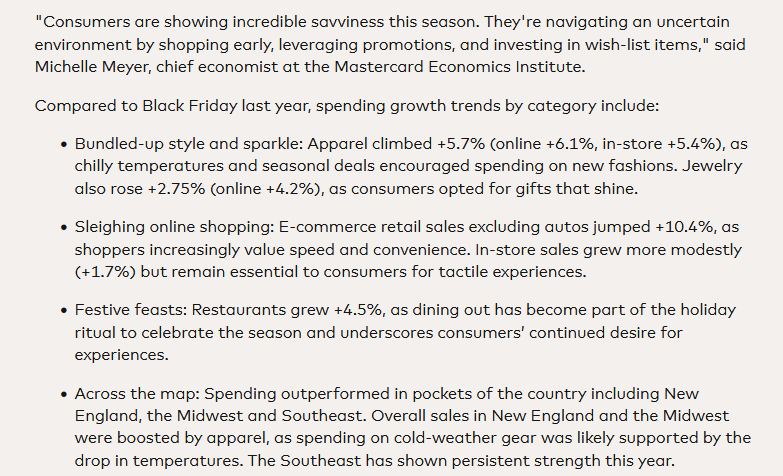- Gold price drifts higher in Monday’s early European session.
- Safe-haven demand amid US presidential election uncertainties, persistent Middle Eastern tensions, might lift the Gold price.
- Traders brace for the US election outcome on Tuesday ahead of the Fed rate decision.
The Gold price (XAU/USD) trades in positive territory on Monday. The US presidential election risks and the ongoing Middle East geopolitical tensions are likely to underpin the yellow metal, a traditional safe-haven asset, in the near term. Nonetheless, the renewed Greenback demand and higher US bond yields might cap the upside for Gold price as higher yields make non-yielding assets like bullion less attractive in comparison.
Investors will closely watch the looming US presidential election on Tuesday. The attention will shift to the US Federal Reserve (Fed) rate decision on Thursday. The uncertainty over the US election outcome is one reason markets assume the Fed will deliver a rate cut of the usual 25 basis points (bps) on Thursday, rather than repeat its outsized half-point easing.
Daily Digest Market Movers: Gold price remains strong ahead of US presidential election
- “ETFs should see further inflows due to the expected interest rate cuts, high fiscal deficits and the highly valued stock markets. However, investment demand in the fourth quarter could be heavily influenced by the outcome of the US elections. The central bank's Gold purchases are likely to be strong again this year, but not at the levels seen in the previous two years. Jewelry demand is also expected to be lower than in the previous year, albeit somewhat higher than previously expected by the WGC,” noted Commerzbank analysts.
- PredictIt has placed a 51% chance of a Harris win on Tuesday, marking the vice president's first lead over Trump (who leads Harris at a 49% chance) on the site since October 9.
- The US NFP increased by 12K in October, the smallest gain since December 2020. This figure followed the 223K rise (revised from 254K seen in September) and below the market consensus of 113K, by a wide margin.
- The Unemployment Rate was unchanged at 4.1% in October, matching the expectations.
- Financial markets have fully priced in a 25 basis points (bps) rate cut by the US Federal Reserve (Fed) at its November meeting on Thursday.
Technical Analysis: Gold price keeps the bullish vibe in the longer term
The Gold price edges higher on the day. The positive picture of the precious metal prevails as the price holds above the key 100-day Exponential Moving Average (EMA) on the daily chart. Furthermore, the 14-day Relative Strength Index (RSI) stands above the 50-midline near 60.20, suggesting the support level is likely to hold rather than break.
More green candlesticks above the all-time high and psychological mark in the $2,790-$2,800 zone could bump XAU/USD to $2,850.
On the other hand, consistent trades below $2,715, the low of October 24 might drag the yellow metal to $2,624, the low of September 30, followed by the $2,600 round mark.
Risk sentiment FAQs
In the world of financial jargon the two widely used terms “risk-on” and “risk off'' refer to the level of risk that investors are willing to stomach during the period referenced. In a “risk-on” market, investors are optimistic about the future and more willing to buy risky assets. In a “risk-off” market investors start to ‘play it safe’ because they are worried about the future, and therefore buy less risky assets that are more certain of bringing a return, even if it is relatively modest.
Typically, during periods of “risk-on”, stock markets will rise, most commodities – except Gold – will also gain in value, since they benefit from a positive growth outlook. The currencies of nations that are heavy commodity exporters strengthen because of increased demand, and Cryptocurrencies rise. In a “risk-off” market, Bonds go up – especially major government Bonds – Gold shines, and safe-haven currencies such as the Japanese Yen, Swiss Franc and US Dollar all benefit.
The Australian Dollar (AUD), the Canadian Dollar (CAD), the New Zealand Dollar (NZD) and minor FX like the Ruble (RUB) and the South African Rand (ZAR), all tend to rise in markets that are “risk-on”. This is because the economies of these currencies are heavily reliant on commodity exports for growth, and commodities tend to rise in price during risk-on periods. This is because investors foresee greater demand for raw materials in the future due to heightened economic activity.
The major currencies that tend to rise during periods of “risk-off” are the US Dollar (USD), the Japanese Yen (JPY) and the Swiss Franc (CHF). The US Dollar, because it is the world’s reserve currency, and because in times of crisis investors buy US government debt, which is seen as safe because the largest economy in the world is unlikely to default. The Yen, from increased demand for Japanese government bonds, because a high proportion are held by domestic investors who are unlikely to dump them – even in a crisis. The Swiss Franc, because strict Swiss banking laws offer investors enhanced capital protection.
Tags: Featured,newsletter


























